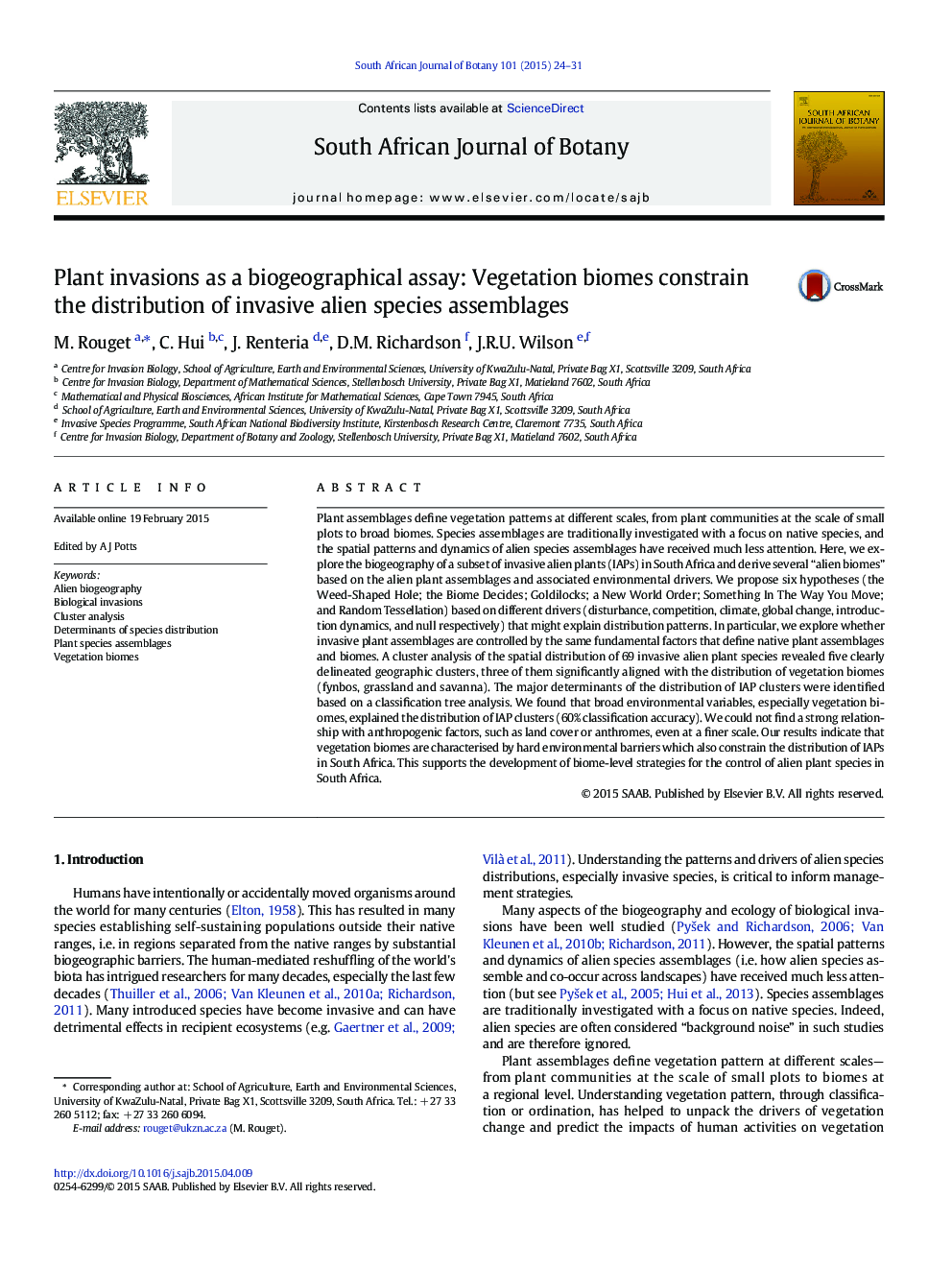| کد مقاله | کد نشریه | سال انتشار | مقاله انگلیسی | نسخه تمام متن |
|---|---|---|---|---|
| 4520404 | 1625157 | 2015 | 8 صفحه PDF | دانلود رایگان |
• Invasive alien plant species assemble into well-defined geographic clusters.
• Climate and vegetation biomes, but not anthropogenic factors, explain most of the distribution of these clusters.
• Biome-level strategies of alien plant control are required.
Plant assemblages define vegetation patterns at different scales, from plant communities at the scale of small plots to broad biomes. Species assemblages are traditionally investigated with a focus on native species, and the spatial patterns and dynamics of alien species assemblages have received much less attention. Here, we explore the biogeography of a subset of invasive alien plants (IAPs) in South Africa and derive several “alien biomes” based on the alien plant assemblages and associated environmental drivers. We propose six hypotheses (the Weed-Shaped Hole; the Biome Decides; Goldilocks; a New World Order; Something In The Way You Move; and Random Tessellation) based on different drivers (disturbance, competition, climate, global change, introduction dynamics, and null respectively) that might explain distribution patterns. In particular, we explore whether invasive plant assemblages are controlled by the same fundamental factors that define native plant assemblages and biomes. A cluster analysis of the spatial distribution of 69 invasive alien plant species revealed five clearly delineated geographic clusters, three of them significantly aligned with the distribution of vegetation biomes (fynbos, grassland and savanna). The major determinants of the distribution of IAP clusters were identified based on a classification tree analysis. We found that broad environmental variables, especially vegetation biomes, explained the distribution of IAP clusters (60% classification accuracy). We could not find a strong relationship with anthropogenic factors, such as land cover or anthromes, even at a finer scale. Our results indicate that vegetation biomes are characterised by hard environmental barriers which also constrain the distribution of IAPs in South Africa. This supports the development of biome-level strategies for the control of alien plant species in South Africa.
Journal: South African Journal of Botany - Volume 101, November 2015, Pages 24–31
